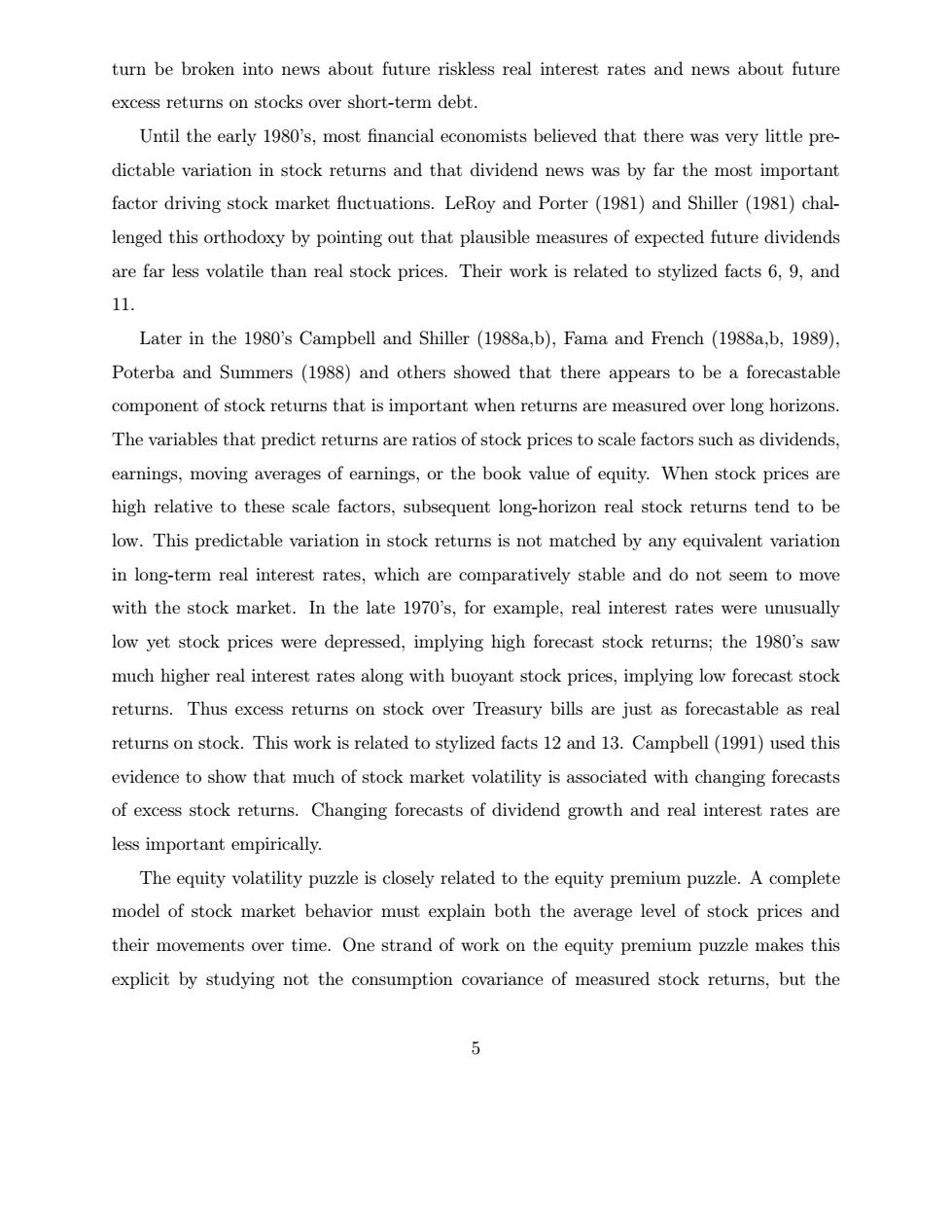正在加载图片...

turn be broken into news about future riskless real interest rates and news about future excess returns on stocks over short-term debt. Until the early 1980's,most financial economists believed that there was very little pre- dictable variation in stock returns and that dividend news was by far the most important factor driving stock market fluctuations.LeRoy and Porter (1981)and Shiller (1981)chal- lenged this orthodoxy by pointing out that plausible measures of expected future dividends are far less volatile than real stock prices.Their work is related to stylized facts 6,9,and 11. Later in the 1980's Campbell and Shiller (1988a,b),Fama and French (1988a,b,1989), Poterba and Summers (1988)and others showed that there appears to be a forecastable component of stock returns that is important when returns are measured over long horizons. The variables that predict returns are ratios of stock prices to scale factors such as dividends, earnings,moving averages of earnings,or the book value of equity.When stock prices are high relative to these scale factors,subsequent long-horizon real stock returns tend to be low.This predictable variation in stock returns is not matched by any equivalent variation in long-term real interest rates,which are comparatively stable and do not seem to move with the stock market.In the late 1970's,for example,real interest rates were unusually low yet stock prices were depressed,implying high forecast stock returns;the 1980's saw much higher real interest rates along with buoyant stock prices,implying low forecast stock returns.Thus excess returns on stock over Treasury bills are just as forecastable as real returns on stock.This work is related to stylized facts 12 and 13.Campbell(1991)used this evidence to show that much of stock market volatility is associated with changing forecasts of excess stock returns.Changing forecasts of dividend growth and real interest rates are less important empirically. The equity volatility puzzle is closely related to the equity premium puzzle.A complete model of stock market behavior must explain both the average level of stock prices and their movements over time.One strand of work on the equity premium puzzle makes this explicit by studying not the consumption covariance of measured stock returns,but the 5
(
(
'
(
)
!
14H#
)
(
%
( (
7
:
0 @
A14B "
A14B
)
%
'
%
'
(
(
9# 1# :
14H
"
A144#
B#
A144#
# 141B# @
"
A144B
(
%
(
#
%#
%
%
%#
(
$ G
(
%
#
$
%)
(
(
$
%)
#
( (
-
13H#
'
#
(
# % %
(
>
14H
%
%
(
# %
(
'
(
,
(
(
6
A11B
( (
%%
'
(
%%
%
$
$
;
( (
'
%
(
I
(
$
(
'
%
(
#
8���������������������������������������������������������������������������������������������������������������������������������������������������������������������������������������������������